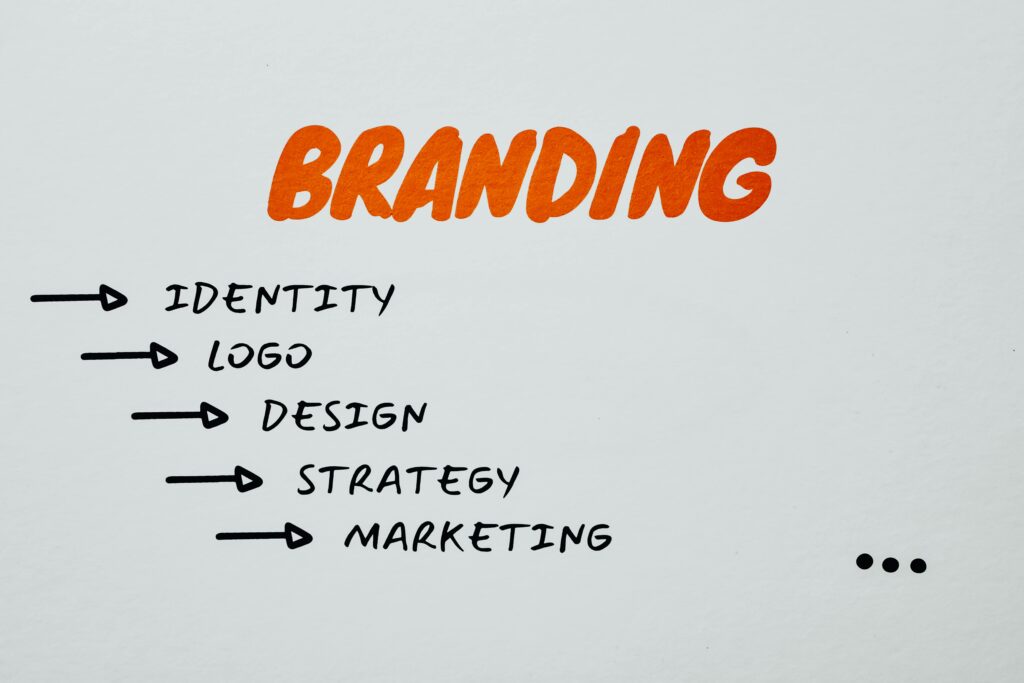In a world where businessmen are increasingly competing for consumer attention in a sea of competition, a commendable Corporate Branding Strategies is now nothing short of a necessity. Your brand is not just the logo or the tagline; it is an entire experience built in the minds of consumers who have encountered your company in one way or the other and which has directly impacted their trust, loyalty, and buying decisions.
A truly successful Corporate Branding Strategiesing Strategies strategy can rise above the noise, can help provide credibility, and build long-term relationships with customers. In this guide, we shall take apart the core strategies that successful companies have used for branding their Corporate Branding Strategiess with elements of strength that outlast market competition.
What Are Corporate Branding Strategies?
Corporate Branding Strategies means promoting the brand name of a corporation rather than specific goods or services. It involves the development of an identity, message, and value system that is coherent through all its marketing strategies and workplaces, as well as customer interactions.
Corporate Branding Strategies should do the following:
Enhance recognition and trust.
Produce a unifying force for all marketing and internal communications.
Attract consumers by creating brand loyalty and attract into its ranks the very best of professionals.s
Improve the reputation of a company and its perceived value. ue
Why Corporate Branding Strategies Matter for Long-Term Success
Strategic branding is the art of shaping the customer’s long-term perception and typically does not end with a good first impression. Brands like Apple, Nike, and Google did not instantly become the top brands worldwide overnight. The art of branding, management, and building corporate identity, so to speak, has come within their grip, and they have worked everything with extreme rigor that conveys.
Corporate Branding Strategies, thus, contribute to the long-term success of a business in the following ways:
Cultivates deep customer loyalty due to emotional attachment
Ensures that brand equity creates sustainable development
Creates differentiation in very dynamic and competitive markets
Encourages customers and employees alike to become brand advocates
Decorated with a robust PR image capable of weathering a storm
Key Corporate Branding Strategies That Deliver Long-Term Results
1. Define Your Brand Purpose and Vision
When you use the term brand purpose, you refer to the why of your business, one that goes beyond profit and delves deeper into the mission and values of your company. A sound definition of brand purpose permits a higher sort of engagement with your audience.
For years, Patagonia has been a brand with a purpose beyond simply selling outdoor clothes-one that protects the environment. That basic tenet impacts everything from product choice and store construction to the level of activism and campaigning Patagonia participates in.
Tip: Prepare a brand purpose statement that communicates what your company stands for, and ensure that attendees can witness this in and around your website, all marketing, and throughout the internal culture.
2. Build an Identity That Lives Up to the Distinction of The Brand
Brand identity is simply a term that identifies everything about the brand that is either seen or understood, from logo to color to font to tone of voice to messaging. Such an identity that is maintained without interruption and is distinctly different from others indeed helps in recall and builds confidence.
Focus on the essentials:
Logo and design elements
Color palette
Typography
Brand voice and tone
Brand personality traits (for example, bold, approachable, innovative)
Action: Develop comprehensive brand guidelines that ensure consistency across all platforms and departments.
3. Tell an Interesting Story About Your Brand
Stories will be remembered before the facts are. A brand story will humanize your brand and engage the audience emotionally; it is a reminder of your values and mission.
A perfect brand story should:
Point out your genesis and your obstacles.
Stemming from your core cause, along with helpful context.
Demonstrated evolution along with vision.
It will be real and emotionally fueled.
Example: the story of two roommates renting out an air mattress has created a brand known for belonging, community, and shared experiences.
4. Foster Consistency Across All Contact Points
The establishment of a trustworthy and reputable brand identity calls for consistency. The look, feel, and language pertinent to your brand, customer interaction and service techniques, and internal systems and culture must correspond to one another in a concerted manner.
Applying consistency to:
Website and digital marketing
Social media profiles and content
Internal branding and employee behaviors
Packaging and product presentation
Pro tip: To establish and maintain cohesive messaging and visual identities, train teams regularly and have set brand guidelines.
5. Strengthen the Corporate Culture
Your employees are your advertisements. A good internal culture shows up in how customers are treated and perceived. Make sure culture and branding are aligned so that internal and external messages match.
Cultural-building strategies:
Articulate values clearly
Reward conformity to values
Provide substantial training and development.
Encourage open communication and feedback.k
Bonus: A solidly developed internal brand will also garner the attraction of top talents who are consistent in thinking with the brand.
6. Create A Memorable Customer Experience
A brand is as strong as the experience it provides. Each interaction,n, through the first impression and purchase support, is bound to influence customers’ perceptions of the brand.
Concentrate on:
Providing great customer support
Smooth user experience across platforms
Personalized communication and offers
Listening and acting on customer comments
Tip: Facilitate your customer engagement and retention through the use of CRM systems and customer journey mapping.
7. Exploit Digital Branding Channels
Digital channels play a very pertinent role in any modern Corporate Branding strategy. Creating an online presence guarantees that your brand is visible, accessible, and entertaining.
Key digital branding channels include:
A professional website containing brand-focused content
Social media platforms present a consistent language and visuals.
Email marketing with a personalized message
Content marketing (through blogs, video, and case studies)
Action: Regularly audit your digital presence to ensure brand alignment across platforms.
8. Enter into Strategic Brand Partnerships
Partnering with other reputable brands can add credence to your brand and help extend your reach. Co-branding done right will help in strengthening brand values while getting one introduced to new audiences.
Tips to achieve the best results:
Partner with similarly aligned-purpose brands
Make joint campaigns or events.
Ensure uniformity in aligning your brand with messaging and design.n
Set clear and specific goals for the partnership
9. Monitor and Manage Reputation
Reputation management is a long-term business branding activity. What matters is more what people say about your brand, and reputation management with positivity can break or make public trust.
How to Maintain Your Reputation:
Track your reviews and mentions on different social platforms.
Respond to feedback and criticisms as quickly as possible.e
Deal with negative public relations through transparency
Encourage positive reviews and testimonials.
Tip: Use Google Alerts, Hootsuite, or Brandwatch to monitor the sentiments about your brand.
10. Evaluate and Evolve Your Branding
As markets shift, customer needs change, and trends come and go, so too must the brand evolve to stay relevant in the long run.
What Rebranding Means: It is different from starting all over again; rather, it is about adjusting to strategic changes while still retaining a true core identity.
Ways to Evolve Your Brand:
Refreshing visuals without changing your core message
Creating sub-brands for your new lines of products
Evolving and re-evolving your messages from time to time
Being in tune with the latest changes in design and advertising trends
Example: The logo of Mastercard was updated in 2019 to make it easier to identify on digital platforms while retaining its iconic elements.
Conclusion
Successful businesses understand that Corporate Branding Strategies is not a one-time effort- it is a continuous strategy affecting every part of the company. And thus, they blend your mission with your visuals, messages, and even internal culture to build a recognized yet respected and remembered brand.
These Corporate Branding Strategies will help you to:
Differentiate your company from competitors in any industry.
Create loyal customers on an emotional basis.
Establish brand equity lasting over a longer duration and investment returns.
Whether you’re just getting started or looking to refresh your brand, now is the perfect time to commit to strategic Corporate Branding Strategies that fuel sustainable success.


